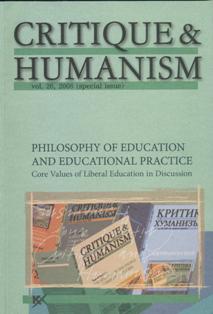Patterns of thought in sixteenth century public education
Patterns of thought in sixteenth century public education
Author(s): Anja-Silvia GöingSubject(s): Cultural Essay, Political Essay, Societal Essay
Published by: Фондация за хуманитарни и социални изследвания - София
Keywords: thought; sixteenth century; public education; learning; philosophy; teaching mterial; descriptive analysis; imitation
Summary/Abstract: Within the context of the increasing interest in sensory perception during the period from 1450 to 1650, we fi nd an unexpected phenomenon: an astonishing tendency to render dependent on linguistic usage the common understanding of things, beings, and facts of nature or the environment.1 Evidence of this can be found in a wide variety of reference works relating either to dialectics or to the methodology of learning, the ratio studiorum,2 or again in conceptually structured encyclopaedias of universal knowledge.3 Through an analysis of Aristotelian texts used in schools, the present study provides evidence of the reciprocal relationship between the dynamic, highly individual process of ‘learning through experience’4 and the constraints of the existing terminology. By concentrating specifi cally on the learning process, it becomes possible to recognise the normative or quasi-normative principles on which teaching methods were based. The precise manner in which these affected perception comes to light, refl exively as it were, through an examination of the measures that were employed for training the senses. By this means, it will be possible to describe more clearly the contribution of the senses to the learning process that was formulated conceptually and employed in the teaching of philosophy in the 16th century universities and academies with the express goal of understanding the universe.
Journal: Критика и хуманизъм
- Issue Year: 2008
- Issue No: 26
- Page Range: 141-158
- Page Count: 18
- Language: English
- Content File-PDF

